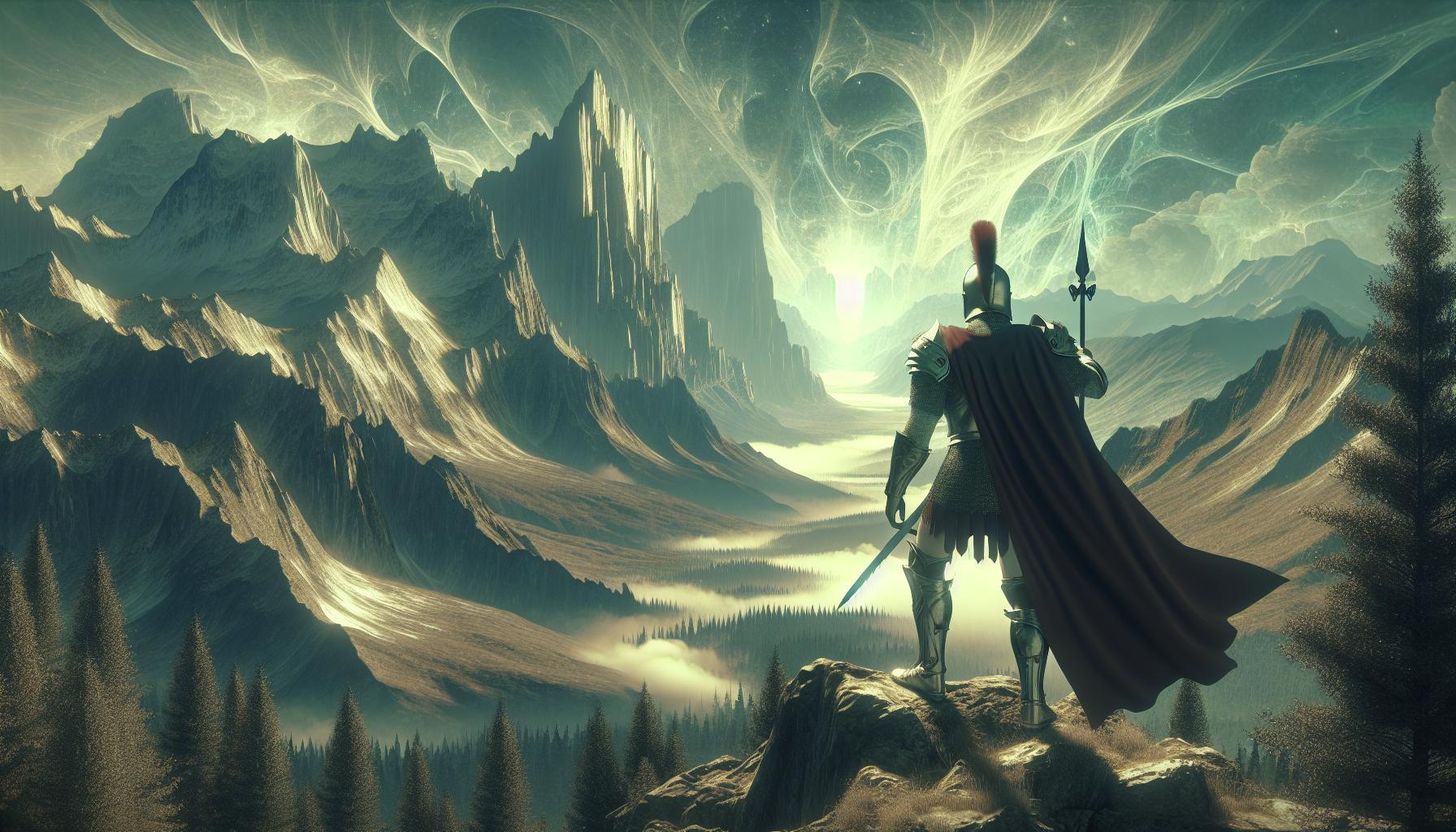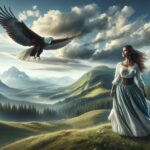The Best Fluffy Pancakes recipe you will fall in love with. Full of tips and tricks to help you make the best pancakes.
Epic poetry has captivated audiences for thousands of years with its grand tales of heroes, gods, and extraordinary adventures. From Homer’s Iliad to Virgil’s Aeneid, these timeless works have shaped literature and storytelling across cultures and generations.
When it comes to identifying epic poetry, certain distinctive features set it apart from other literary forms. While some readers might recognize a few obvious characteristics like heroic deeds or supernatural elements, there’s much more to this fascinating genre than meets the eye. Whether you’re a literature student prepping for an exam or simply curious about the building blocks of epic poetry, understanding these key features will unlock a deeper appreciation for these magnificent works.
Understanding Epic Poetry as a Literary Form
Epic poetry exemplifies specific structural elements that distinguish it from other poetic forms. These elements include consistent meter throughout lengthy narrative poems extending thousands of lines. Classical epics demonstrate formal verse patterns like dactylic hexameter in Greek epics such as Homer’s works.
The narrative organization follows established patterns:
- Invocation of divine inspiration at the opening
- In medias res (starting in the middle of the action) narrative structure
- Extended formal speeches by main characters
- Parallel plot developments in divine supernatural realms
Epic conventions incorporate distinctive stylistic features:
- Epithets (repeated descriptive phrases for characters)
- Extended similes called epic similes
- Catalog verses listing warriors ships or armies
- Stock scenes of battles feasts or councils
| Key Feature | Description | Example from Classical Epics |
|---|---|---|
| Length | 10,000+ lines | Iliad: 15,693 lines |
| Setting | Multiple realms | Earth Olympus Underworld |
| Time Span | Years decades | Odyssey: 10-year journey |
| Characters | Gods heroes mortals | Achilles Zeus ordinary soldiers |
The epic scale encompasses:
- Vast geographical settings spanning multiple lands
- Long temporal sequences covering years or generations
- Large cast of characters from different social levels
- Universal themes affecting entire nations civilizations
- Formal diction appropriate to heroic subjects
- Recurring phrases marking key moments
- Traditional metaphors specific to epic genre
- Ceremonial speeches preserving cultural wisdom
The Hero’s Journey in Epic Poetry

Epic poetry chronicles the transformative journey of heroic figures through trials, triumphs, and profound personal growth. The hero’s path unfolds across mythical landscapes while interweaving mortal struggles with divine destinies.
Larger-Than-Life Protagonists
Epic heroes embody exceptional qualities that set them apart from ordinary individuals. Figures like Odysseus demonstrate superior strength, intelligence, and courage through their remarkable feats. These protagonists face moral challenges that test their character, such as Aeneas choosing between personal desires and destined duties. Their decisions carry weight beyond individual consequences, impacting entire kingdoms, civilizations, or humanity’s fate. Epic heroes like Beowulf display superhuman abilities while maintaining human flaws, creating relatable yet aspirational characters whose internal struggles mirror universal human experiences.
Divine Intervention and Supernatural Elements
Gods, spirits, and supernatural forces actively shape the narrative arc of epic poetry. Divine beings like Zeus in the Iliad directly influence battles, relationships, and key plot developments. Heroes receive magical weapons, prophetic guidance, or divine protection that proves crucial to their quests. Supernatural creatures such as Grendel in Beowulf or the Cyclops in The Odyssey create formidable obstacles that test the hero’s mettle. The interaction between mortal and immortal realms adds cosmic significance to the hero’s actions while reflecting cultural beliefs about fate, destiny, and divine will.
Grand Scale and Scope of Epic Narratives
Epic poetry encompasses expansive narratives that span generations while weaving together multiple storylines across vast geographical territories. The genre’s grand scale serves as a defining characteristic that sets it apart from other poetic forms.
Vast Settings and Time Periods
Epic narratives traverse multiple kingdoms, realms or territories, often incorporating both earthly locations and supernatural domains. The Odyssey spans the Mediterranean Sea, mysterious islands and the underworld, while Beowulf’s tale moves across Scandinavian kingdoms. These works frequently cover extensive time periods, ranging from several years to multiple generations. The Mahabharata chronicles events across multiple ages, following family lineages through successive rulers and battles. Epic settings extend beyond physical boundaries to include cosmic realms where gods dwell, creating a multilayered universe within the narrative.
Impact on Entire Nations or Civilizations
Epic poetry focuses on events that shape the destiny of entire peoples or civilizations. The Aeneid recounts the founding of Rome through Aeneas’s journey from Troy. These narratives interweave personal quests with national destinies, where individual actions determine the fate of kingdoms. The Fall of Troy in the Iliad triggers consequences that affect multiple nations across the Mediterranean. Epic events often mark turning points in civilization: the establishment of new kingdoms, the fall of empires or the creation of lasting alliances. Divine prophecies in these works frequently foretell the rise or decline of entire societies, connecting individual heroic deeds to broader historical outcomes.
Formal Elements of Epic Poetry
Epic poetry contains distinct formal characteristics that distinguish it from other literary forms. These elements combine to create the genre’s distinctive voice and structure.
Elevated Language and Style
Epic poetry employs formal diction marked by archaic words rich metaphors grand similes. The language maintains a solemn dignified tone throughout the narrative incorporating epithets like “rosy-fingered Dawn” in Homer’s works. Fixed phrases called kennings appear repeatedly creating memorable descriptions such as “whale-road” for sea in Beowulf. Epic similes extend comparisons across multiple lines drawing elaborate parallels between heroic events natural phenomena. This elevated style sets epic poetry apart from common speech establishing an appropriately majestic tone for tales of gods heroes.
Traditional Verse Forms
Epic poetry follows structured metrical patterns specific to different cultural traditions. Greek Roman epics use dactylic hexameter with six metrical feet per line creating a rhythmic flow. Anglo-Saxon epics feature alliterative verse with four stressed syllables per line linked by similar consonant sounds. Sanskrit epics employ the sloka meter consisting of 32 syllables arranged in four quarters. These formal constraints shape the narrative presentation establishing consistency across thousands of lines. The meter aids memorization oral transmission while lending authority gravitas to the epic’s elevated subject matter.
Essential Characteristics of Epic Works
Epic poetry exhibits distinctive features that set it apart from other literary forms. These characteristics define the genre’s structure, style, and narrative approach.
Beginning In Medias Res
Epic poems start in the middle of the action, plunging readers directly into significant events. The Latin phrase “in medias res” translates to “into the middle of things.” Homer’s Odyssey opens with Odysseus trapped on Calypso’s island, revealing earlier events through flashbacks. The Aeneid begins with Aeneas’s fleet caught in a storm near Carthage, though the story’s origin lies in Troy’s fall. This technique creates immediate engagement, establishes dramatic tension, and allows for complex narrative structures through strategic revelations of past events.
Epic Invocation
Epic poets traditionally open their works by calling upon divine forces for inspiration and guidance. The Iliad starts with “Sing, O goddess, the anger of Achilles,” invoking the Muse of epic poetry. Milton’s Paradise Lost appeals to the “Heavenly Muse” for assistance in telling his tale of humanity’s fall. These invocations establish the epic’s elevated tone and acknowledge the supernatural forces that influence the narrative. The practice connects human storytelling to divine wisdom and positions the poet as a vessel for transmitting sacred or historical truths.
Conclusion
Epic poetry stands as a testament to humanity’s enduring love for grand narratives that combine heroic deeds supernatural elements and timeless wisdom. Through its distinctive features like formal verse patterns divine intervention and elevated language this genre has shaped literary traditions across cultures for millennia.
These masterful works continue to captivate readers with their complex heroes sweeping narratives and profound themes. Whether studying the dactylic hexameter of classical epics or exploring the rich mythology woven throughout these tales understanding these essential features helps unlock the full power and beauty of epic poetry.

